A small roller coaster starts at point A with a speed u on a curved track as shown in the figure
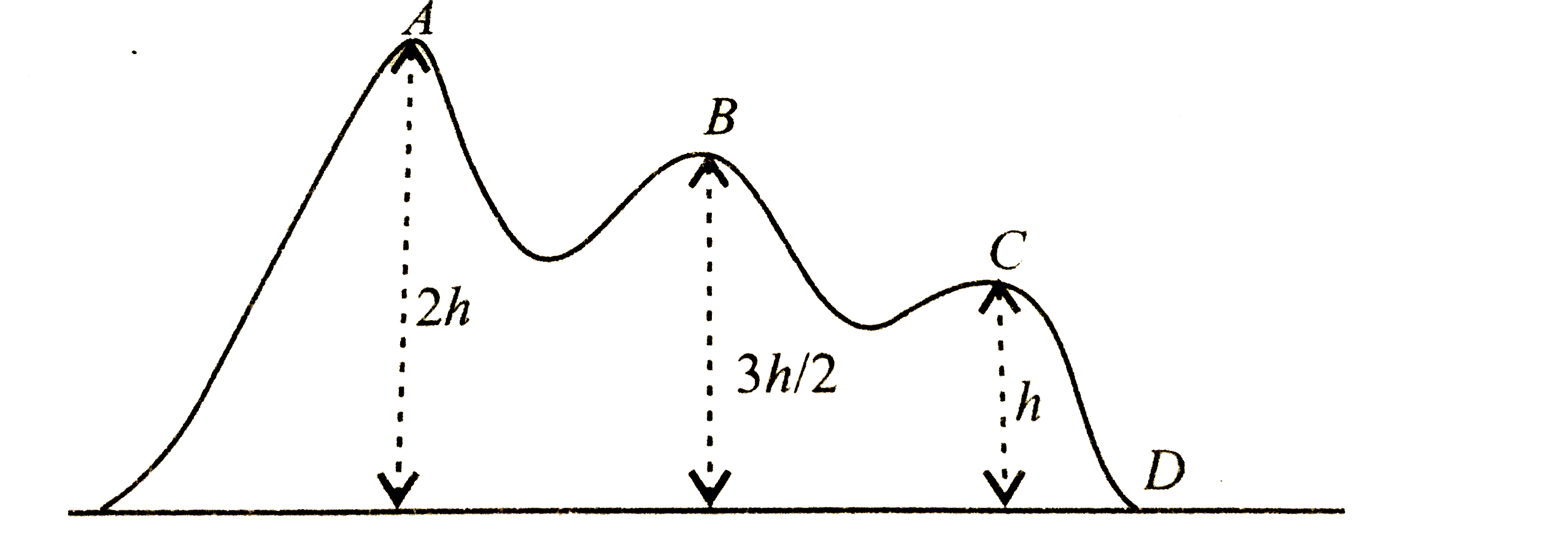
The friction between the roller coaster and the track is negligible and it always remains in contact with the track. The speed of roller coaster at point D on the track will be
(u2+gh)1/2
(u2+2gh)1/2
(u2+4gh)1/2
u
The correct Answer is:C
Let the speed of the roller coaster at point D be v.
Applying the law of conservation of energy between points A and D, we get
12mu2+mg(2h)=12mv2+0
or u2+4gh=v2 or v=√u2+4gh
Topper's Solved these Questions
- BOOK - NCERT FINGERTIPSCHAPTER - WORK , ENERGY AND POWEREXERCISE - The Potential Energy Of A Spring6videos
WORK , ENERGY AND POWER
- BOOK - NCERT FINGERTIPSCHAPTER - WORK , ENERGY AND POWEREXERCISE - Various Forms Of Energy : The Law Of Conservation Of Energy6videos
WORK , ENERGY AND POWER
- BOOK - NCERT FINGERTIPSCHAPTER - WORK , ENERGY AND POWEREXERCISE - The Concept Of Potential Energy9videos
WORK , ENERGY AND POWER
- BOOK - NCERT FINGERTIPSCHAPTER - WAVESEXERCISE - Assertion And Reason15videos
WAVES
Similar Questions
A small block of mass m slides along a smooth frictional track as shown in the figure. If it starts from rest at P, what is the resultant force acting on it at Q?
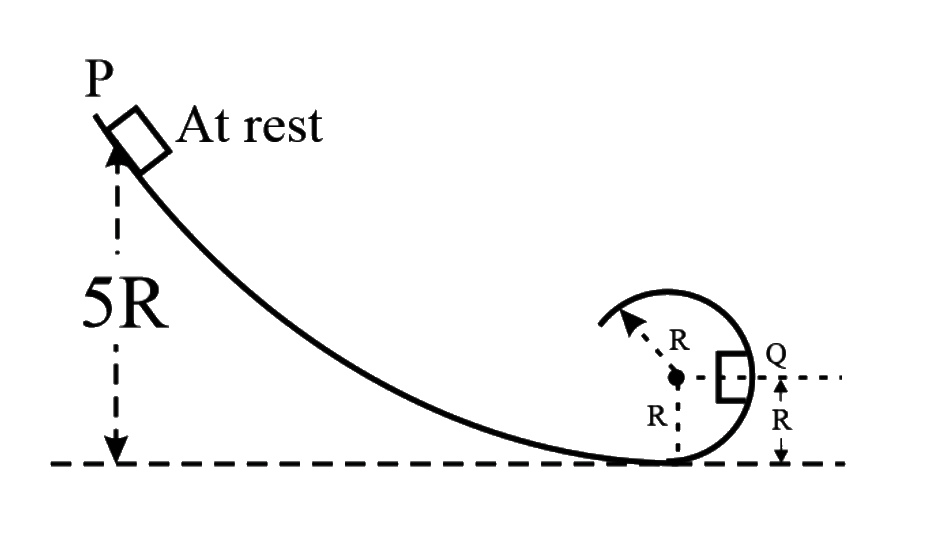 View Solution
View SolutionA small sphereical ball is released from a point at a height h on a rough track shown in figure. Assuming that it dow not slip anywhere, find its linear speed when it rolls on the horizontal part of the track.
 View Solution
View Solution
Knowledge Check
- Question 1 - Select One or More
A 1000 kg car starts from rest at point 1 and moves without friction down the track as shown in the figure. At point 2, the radius od curvature of the track is 6m.
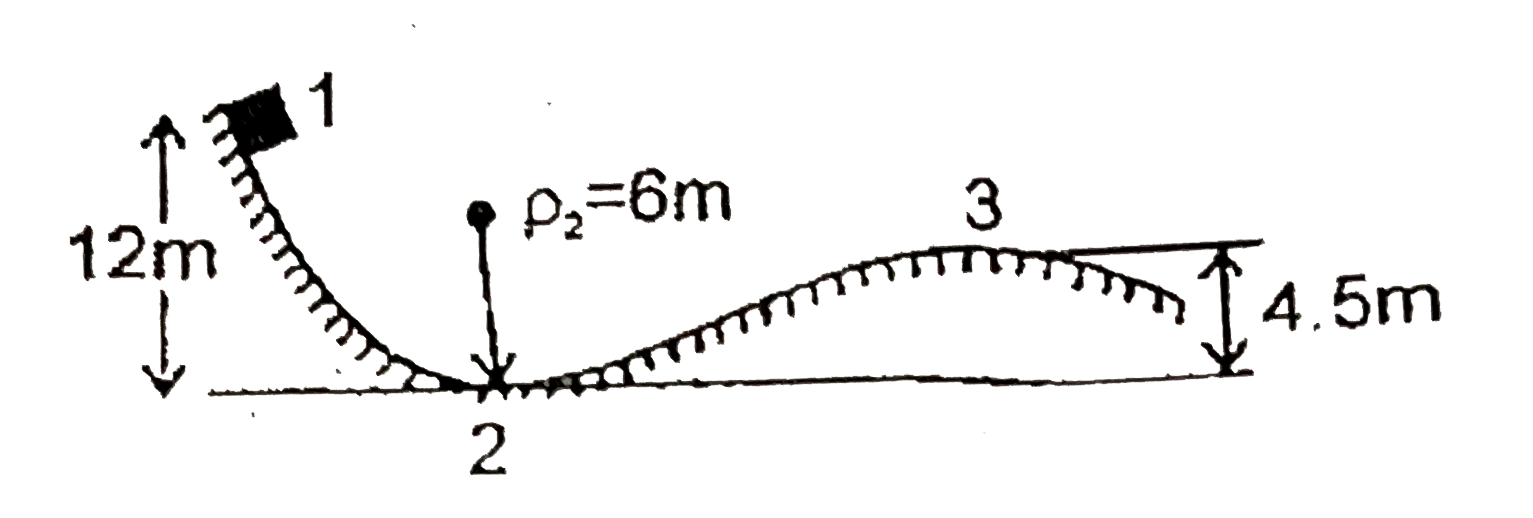 Athe force exerted by the track on the car at point 2 is 4000 kg wtBthe force exerted by the track on the car at point 2 is 5000 kg wtCthe minimum safe value of the radius of curvature at point 3 is 15 mDthe minium safe value of the radius of curvature at point 3 is 10 m
Athe force exerted by the track on the car at point 2 is 4000 kg wtBthe force exerted by the track on the car at point 2 is 5000 kg wtCthe minimum safe value of the radius of curvature at point 3 is 15 mDthe minium safe value of the radius of curvature at point 3 is 10 m - Question 2 - Select One
A car runs at constant speed around the horizontal race track shown in the figure. Over which portion of the track is the magnitude of the acceleration the greatest?
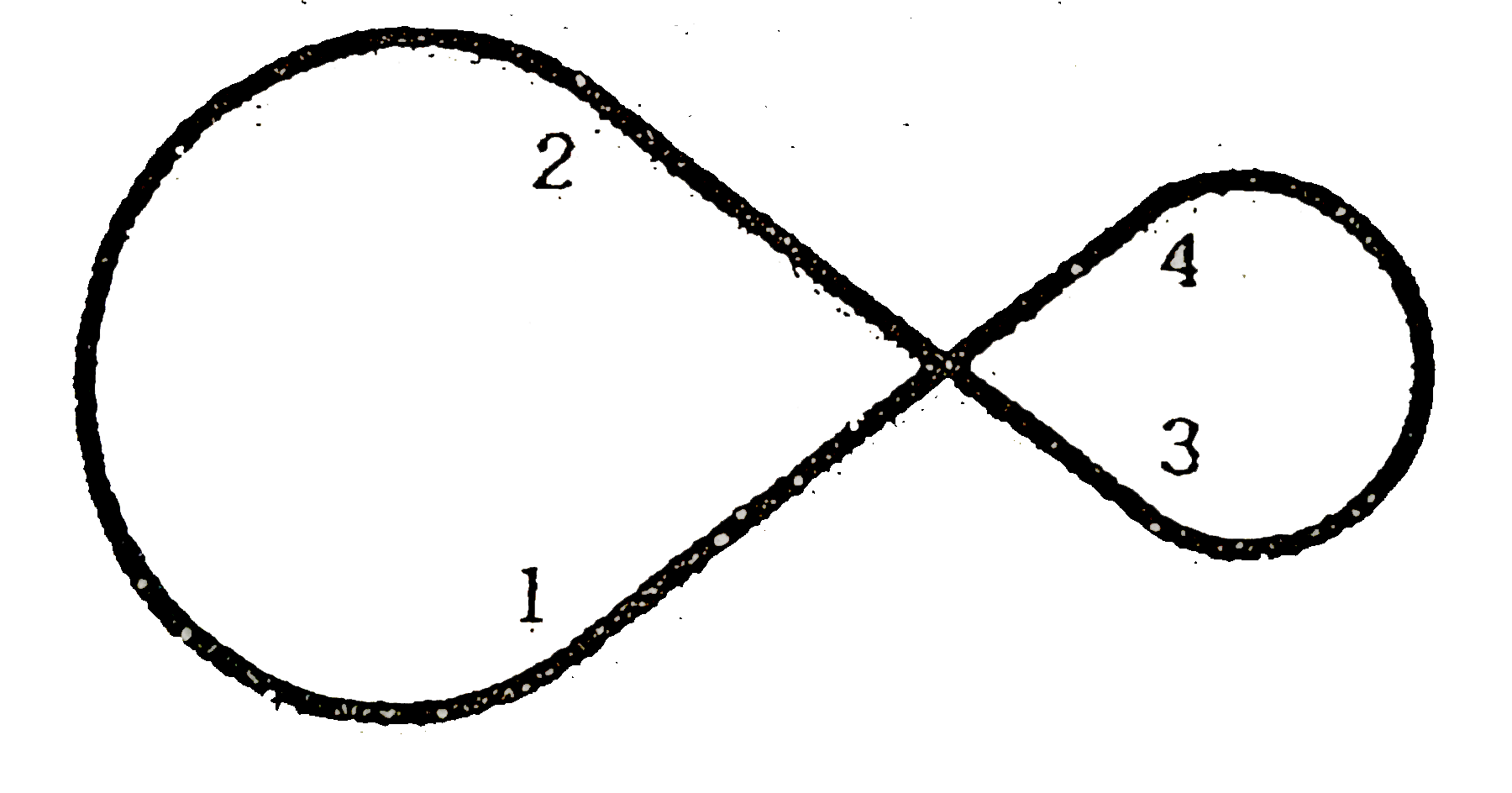 AFrom 1 to 2BFrom 2 to 3CFrom 3 to 4DFrom 4 to 1
AFrom 1 to 2BFrom 2 to 3CFrom 3 to 4DFrom 4 to 1 - Question 3 - Select One
A point particle of mass m, moves long the uniformly rough track PQR as shown in figure. The coefficient of friction, between the particle and the rough track equals μ. The particle is released, from rest from the point P and it comes to rest at a point R. The energies, lost by the ball, over the parts, PQ and QR, of the track, are equal to each other, and no energy is lost when particle changes direction from PQ to QR.
The value of the coefficient of friction μ and the distance x (=QR), are, respectively close to:
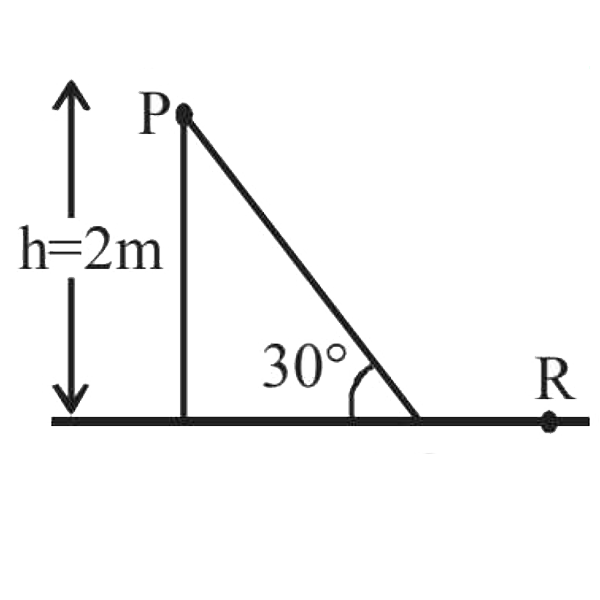 A(a) 0.29 and 3.5mB(b) 0.29 and 6.5mC(c) 0.2 and 6.5mD(d) 0.2 and 3.5m
A(a) 0.29 and 3.5mB(b) 0.29 and 6.5mC(c) 0.2 and 6.5mD(d) 0.2 and 3.5m
A solid cylinder of mass M and radius R rolls down an inclined plane of height h without slipping. The speed of its centre when it reaches the bottom is.
View SolutionA small ball is rolled with speed u from point A along a smooth circular track as shown in figure. If x=3R, then
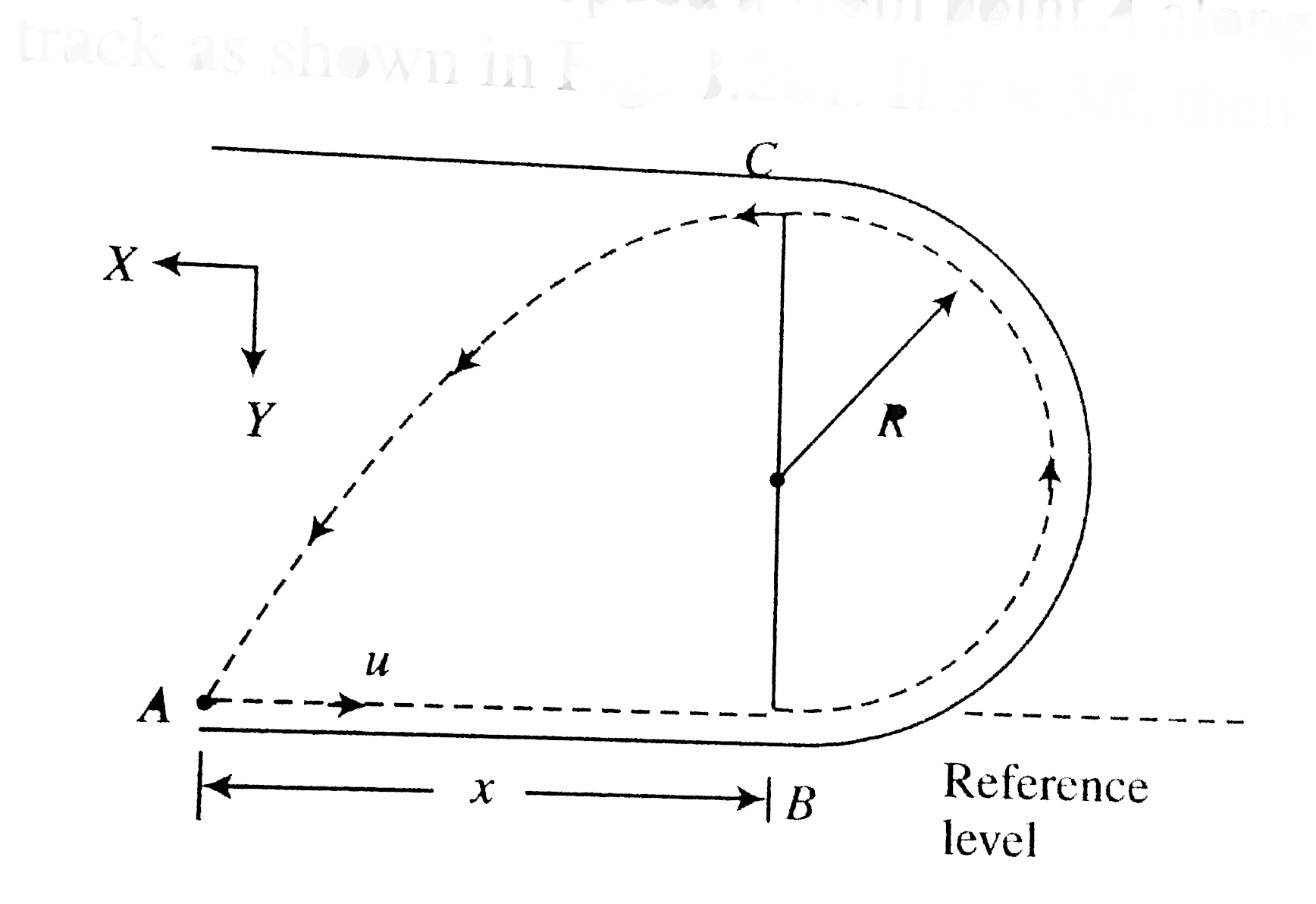
What is the minimum value of x for which the ball can reach the point of projection after reaching C?View SolutionA small block is shot into each of the four tracks as shown below. Each of the tracks rises to the same height. The speed with which the block enters the track is the same in all cases. At the highest point of the track, the normal reaction is maximum in
View SolutionA small block is shot into each of the four tracks as shown below. Each of the tracks rises to the same height. The speed with which the block enters the tracks is the same in all cases. At the highest point of the track, the normal reaction is maximum in :
View SolutionA block of mass m is placed on a vertical fixed circular track and then it is given velocity v along the track at position A on track. The coefficient of friction between the block and the track varies with the angle θ . If the block moves on track with constant speed then the coefficient of friction is
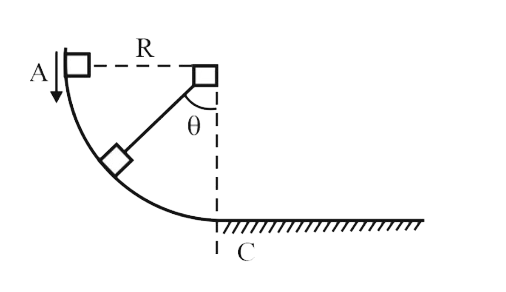 View Solution
View Solution

